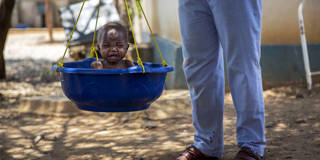To break Africa’s cycle of hunger, caused by conflict, disease, and drought, the international community must overhaul how it delivers aid to the continent’s most vulnerable people. This requires providing local partners the resources they need to sustain services long after multinational agencies have moved on.
NAIROBI – The scale of human suffering currently engulfing drought-stricken Somalia is almost indescribable. It is difficult to find words to convey the devastation and misery gripping the country, now in the midst of a prolonged period of record-low rainfall. I have watched emaciated herds of livestock drop, lifeless, into the dust, and been present when people’s futures evaporated in front of their eyes.

NAIROBI – The scale of human suffering currently engulfing drought-stricken Somalia is almost indescribable. It is difficult to find words to convey the devastation and misery gripping the country, now in the midst of a prolonged period of record-low rainfall. I have watched emaciated herds of livestock drop, lifeless, into the dust, and been present when people’s futures evaporated in front of their eyes.